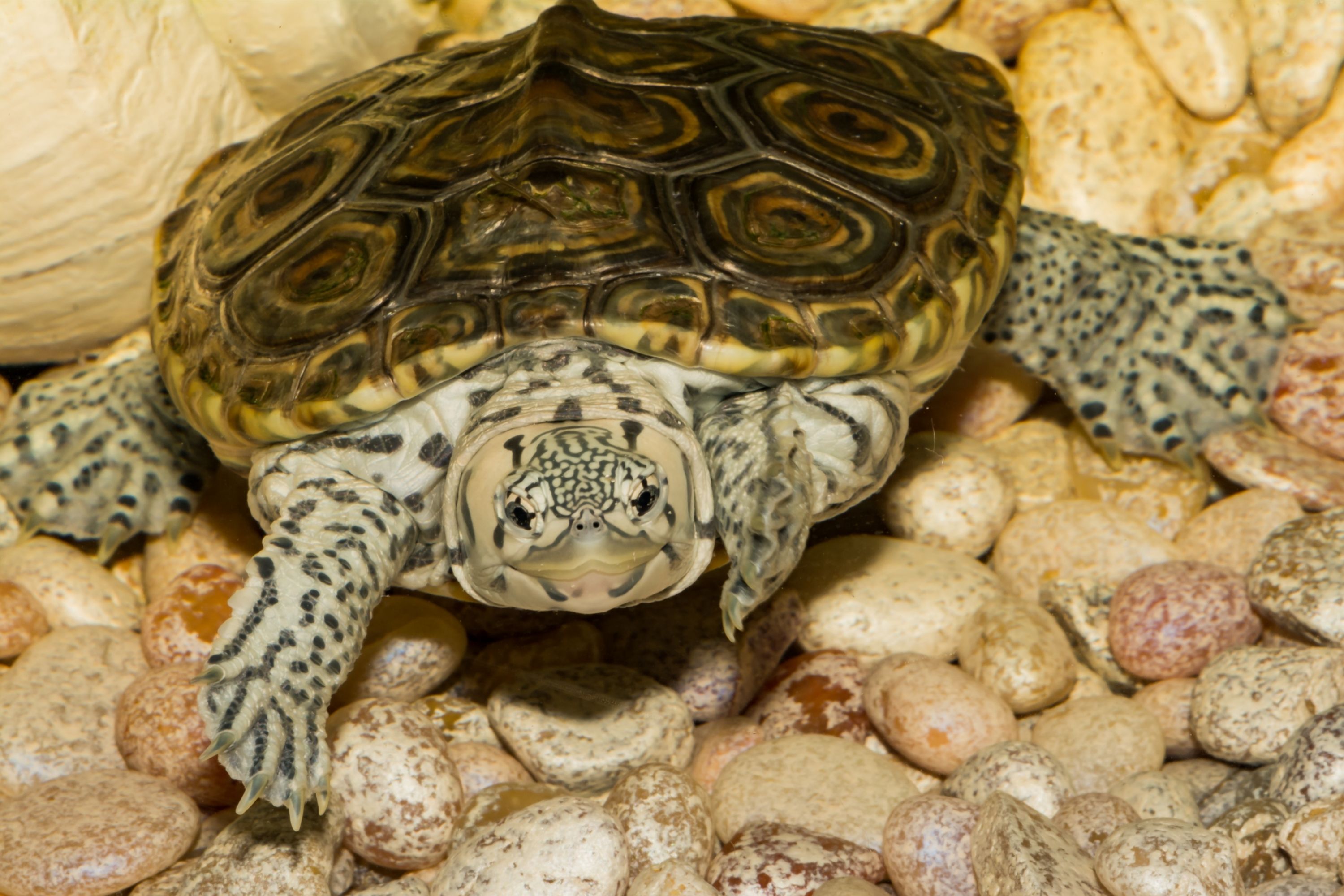Diamondback terrapin
(Malaclemys terrapin)

Description
The diamondback terrapin or simply terrapin (Malaclemys terrapin) is a species of turtle native to the brackish coastal tidal marshes of the Northeastern and southern United States, and in Bermuda. It belongs to the monotypic genus Malaclemys. It has one of the largest ranges of all turtles in North America, stretching as far south as the Florida Keys and as far north as Cape Cod. The common name refers to the diamond pattern on top of its shell (carapace), but the overall pattern and coloration vary greatly. The shell is usually wider at the back than in the front, and from above it appears wedge-shaped. The shell coloring can vary from brown to grey, and its body color can be grey, brown, yellow, or white. All have a unique pattern of wiggly, black markings or spots on their body and head. The diamondback terrapin has large webbed feet. The species is sexually dimorphic in that the males grow to a carapace length of approximately 13 cm (5 in), Terrapins look much like their freshwater relatives, but are well adapted to the near shore marine environment. They have several adaptations that allow them to survive in varying salinities. They can live in full strength salt water for extended periods, and their skin is largely impermeable to salt. Terrapins have lachrymal salt glands, not present in their relatives, which are used primarily when the turtle is dehydrated. They can distinguish between drinking water of different salinities. Terrapins also exhibit unusual and sophisticated behavior to obtain fresh water, including drinking the freshwater surface layer that can accumulate on top of salt water during rainfall and raising their heads into the air with mouths open to catch falling rain drops. The diamondback terrapin typically feeds on fish, crustaceans (such as shrimp and crabs) marine worms, marine snails (especially the saltmarsh periwinkle), clams, barnacles, mussels, other mollusks, insects, carrion, and sometimes ingest small amounts of plant material, such as algae. At high densities the terrapin may eat enough invertebrates to have ecosystem-level effects, partially because periwinkles themselves can overgraze important marsh plants, such as cordgrass (Spartina alterniflora).
Taxonomic tree:







